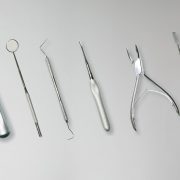When treating lower anterior crowding, orthodontists often face a classic dilemma — should one extract a mandibular incisor or create space through interproximal reduction (IPR)? A recent study published in the British Dental Journal (2025) offers data-driven clarity to this long-standing debate.
Researchers conducted a retrospective cohort study comparing one-year post-treatment stability and root resorption between IPR and mandibular incisor extraction (MIE). Forty patients (twenty in each group) were assessed using the American Board of Orthodontics Objective Grading System (ABO-OGS) for treatment quality and cone-beam CT scans for root resorption evaluation.
The results favored IPR. One year after treatment, the median ABO-OGS score was significantly better in the IPR group (38.2) than in the MIE group (43.5), with a 5.3-point difference (p = 0.048). Meanwhile, the MIE group showed more root resorption — about 2.0 mm greater (p = 0.042). Simply put, while extracting an incisor may yield quick alignment initially, interproximal reduction provided more stable results and was biologically gentler in the long run.
These findings highlight IPR as a safe and effective approach, particularly in mild to moderate crowding cases. By preserving the full complement of teeth, IPR maintains arch integrity and reduces the risk of relapse and root damage. Extraction, though still appropriate in select cases of severe crowding or tooth-size discrepancies, should be chosen cautiously.
As modern orthodontics continues to shift toward minimally invasive techniques, these findings support the use of IPR as a reliable, stable, and safer option for managing lower anterior crowding.
Source: British Dental Journal : https://www.nature.com/articles/s41415-025-8887-9




















Comments